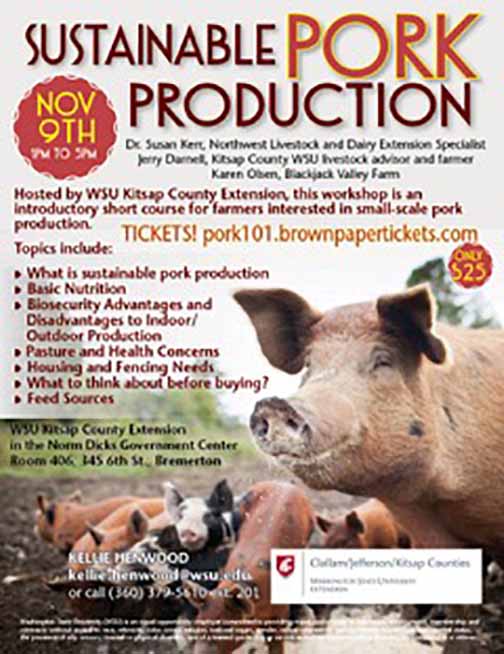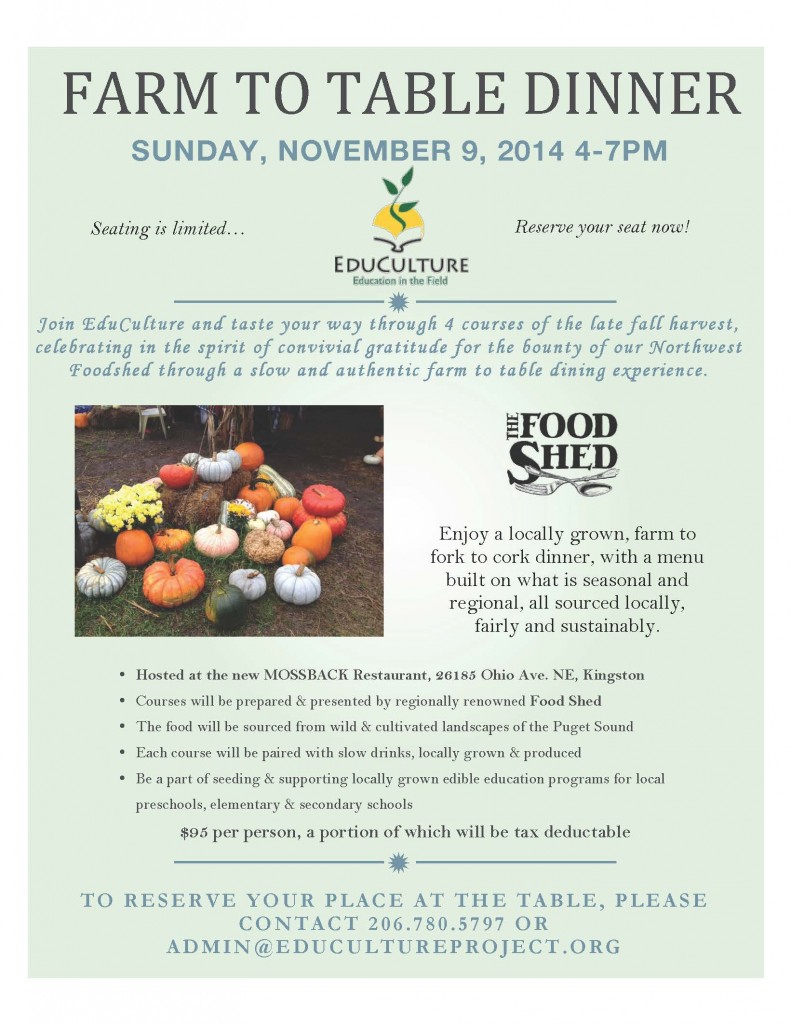WSU-Kitsap offers Pork Production 101
October 20th, 2016
No Horse’n Around
September 28th, 2016
Partnering with PSE and Impact BioEnergy, the Pub has set up a HORSE pilot demonstration (more detail at Fresh Connections). Because composting can be both an art and a science, we’ll be attempting to discover the practices that work best with our particular blend of food waste and volume. The mechanical HORSE will be temporarily employed adjacent to our parking lot for about six-months – imitating other biological ruminants (barnyard animals). We expect that it will “eat’ or otherwise divert over 100 pounds per day of our food and carbon-based wastes from our waste bins.
Also, of great interest to our partners, the electrical output will be monitored and analyzed. Remember watching Doc Brown power up his time-travel machine with banana peels among other items scavenged from garbage in “Back to the Future II”? Well, that may be our new reality. We hope to power part of our electrical use during the pilot phase of the project with the same food waste.
See how it works on YouTube
We’ll be keeping you updated here over the next few months.
Oh, and being Bainbridge Island, even though the project is community-based, it still has its detractors. So, if you think this is a cool project, keep the positive comments coming!
Mindful Farm-to-Fork Dining Experience at Dayaalu Center
July 28th, 2016
The Dayaalu Center, one of Bainbridge Island’s beloved yoga and holistic body healing centers, will host an enchanting communal meal beneath the stars on Saturday, July 30th from 7 – 9 PM, as they join forces with the green Quince Blossom Kitchen to serve a four course, farm-to-fork dinner on their patio. Both of these holistic businesses focus on transforming body and mind through various mediums, ranging from plant-based meals prepared with love, to yoga, music, and meditation. The convergence of their missions, along with the missions of local farms, will culminate in a conscious dining experience that connects you deeply with your community, the land, and prana, the life force, which flows through these plants and transfers into your body through conscious consumption.
Quince Blossom Kitchen’s Emily Abby Klein has been seasoned in many of Seattle’s fine restaurants and is an up-and-coming caterer with a focus on simple and elegant plant-based meals. She will be utilizing the summer harvests of the island’s local farms, abundant in fruits and vegetables of all varieties. By attending this farm-to-fork dinner, you will expand your culinary prowess of vegetarian meals and open the possibilities of healthy, clean eating, while supporting local farmers, dedicated to stewardship of the land and the practice of ecologically sustainable farming that utilizes natural landscape and nature’s rhythm and cycles.
In addition to expanding your community and rejuvenating your relationship with plant-based food, the Farm-to-For Dinner with Quince Blossom Kitchen is expanding the scope of their mission by promoting egalitarian access to healthy, organic food for all, in partnership with downtown Seattle’s Green Plate Special. A portion of the proceeds from the evening’s dinner will be donated to this youth-centered educulture organization, bringing a hands-on farming experience to fourth- to eighth-graders. At Green Plate Special, kiddos learn about basic food and nutrition and grow from there, planting, growing, harvesting, cooking, and eating their own vegetables! In an urban setting—particularly low-income—access to organic food is difficult. This organization provides crucial gardening, health, and cooking skills that empower and inspire a healthier youth and sustainable future.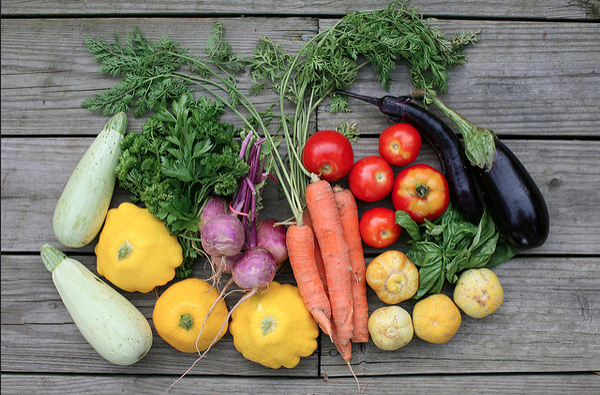
This joyous event is also meant to bring acquaintances and even strangers together around a table to celebrate in the space we call “home” with laughter, storytelling, skill-sharing, and general elation. The Dayaalu Center guides many on the path to mindfulness, raised consciousness, meditation, yoga and pilates, sound healing, and aryuvedic care, with a desire to “help us hear, see, smell, taste, touch, and move in ways that cultivate AWE-filled moments, compassionate engagement with life, and connections to self and others,” according to their site.
If you want to participate in this conscious community meal, register here. Seats are $50 per person, which includes gratuity and taxes, as well as your contribution toward Green Plate Special. For four courses of local, organic food, prepared with love for you and your community, this is one meal you don’t want to miss. Email Jeny at jeny@dayaalucenter.com or Emily at quinceblossomkitchen.org with additional questions.
Did You Know you could Compost those Fall Leaves Too?
November 7th, 2015
Food scraps and decomposing plants from your spring and summer garden are fantastic compost material, but there’s something else–something better–that we’ve been missing all along: tree leaves. At least twice as rich in minerals than manure, the composted leaves of most trees can save you cash, not only on what you would spend on plant food and humus, but also on sanitation bills.
Some of you may be thinking, Well, I already save on bills by burning my leaves. But think of the carbon footprint you create when burning that organic material. Plants absorb carbon dioxide and release oxygen as they grow, storing the carbon dioxide in plant material that is rereleased as the plants burn. Even though composting also releases small amounts of carbon, much of it is contained in the decomposing plant matter. A major contributor to climate change and airborne pollutants, carbon dioxide is a greenhouse gas that contributes to the greenhouse effect, which adds “insulation” to the earth, making our planet warmer.
During extra hot summer months that often go unaccompanied by rain, your mineral-rich leaf compost will improve depleted and dry soil, helping your garden reach its full potential. Plant material from trees, ranging from leaves to pine needles, are high in mineral content such as calcium, magnesium, nitrogen, and phosphorus–many of which make up your average bag of garden compost or potting soil. This is because most trees are deep-rooted, absorbing minerals from deep within the earth that travel through the tree and into the leaves. The structure of these leaves as they decompose, known as humus, facilitates mineral filtration, soil consistency, and overall plant and soil health by aerating heavy soils, preventing sandy soils from drying, and balancing water levels in the soil.
In order to successfully compost leaves, one must do a bit more than rake them into a pile and check on the pile come springtime. Adding nitrogen—such as manure—to the pile will allow the compost to heat up and give the bacteria in the compost something to break down. Next, attempt to grind or shred your leaves. This will make handling the compost much easier, as the humus will be more broken-down. Turn the compost pile every three weeks and, come spring, use your new compost as mulch for a healthy garden and healthy harvest!
For more information on other things you can use for compost, check out this detailed composting chart that lists materials ranging from dog poo to algae.
Contributed by Christine St. Pierre
The Medicine Chest: Interview with Local Herbalist and Entrepreneur
October 22nd, 2015

Nora Harrington and her close friends are asking communities to rethink their medicine cabinets, bringing herbal remedies directly to your door. She and I shared a cup of virtual tea and chatted about her herbalism passion, entrepreneurial journey, and the love and intentions behind her recent endeavor, Medicine Chest Herbs. Pull up a chair and join us.
Christine St. Pierre: Starting a business on your own takes great planning, passion, and grit. What about herbalism moved you so deeply that you took it upon yourself to bring it to others?
Nora Harrington: Aw. Such a sweet question. Thanks for seeing that!
In my early twenties, I was pretty sick. I did my own research and found some great healers to help me, but a lot of the alternative modalities I wanted to try were just out of my budget (i.e. acupuncture and naturopathy). I had always been studying herbs and alternative health, but it wasn’t until a friend gave me a bottle of homemade bitters that I really got a taste of Western or Folk Herbalism. They cured me! Those bitters helped me so much. And I was astonished that I could go out and make my own batch after. I started cooking up a storm of herbal medicine and I felt deeply inspired by the accessibility and effectiveness of this medicine. Soon afterward, I enrolled in Herbalism School in Portland, and the rest is history.
When we were doing the first herb CSA, we got a lot of feedback from people that we were helping them learn about herbs, and I found that really inspiring, too. I started this business because I truly believe that the medicine we need is right outside our door, and that plant medicine belongs in our homes. It is an “accident” of the current culture that we do not automatically inherit a basic knowledge of how to heal ourselves with herbs and food. That’s why our little tagline is “Grandma Knows Best.”
St. Pierre: How did the seed for Medicine Chest Herbs become planted and grow into fruition?
Harrington: The idea for an herbal remedies CSA landed in my brain almost 4 years ago. My dear friend Heather Wolf and I were planning to attend herb school, but we needed to raise money. I had just started to make remedies at home and I had been giving them out to friends and family members, and I thought, “Why don’t I sign people up for this ahead of time?” So Heather and I started Remedies CSA called The Wheel Plant Medicine. We ran it for a year and had a wonderful time, holding some classes and herb walks, too. It helped us pay for school.
Then, after traveling to Europe two years ago, I decided I wanted to start the project again, but in a more financially viable way. (The Wheel had been all donation based.) I had the idea this time to partner with other small-scale herbalists; by finding other people to make the medicine, I could focus on curating the shares and creating the educational zine that comes with them. The zine is a great way for me to make art in the name of empowering people to heal themselves with herbs. It has been really rewarding.
Mirabai “The Magician” Troll is my business partner. Starting this project was overwhelming–I had never had a real business before and there were so many things that my witchy artist brain could short circuit on. Mirabai came on initially as “Head of the Problems Department,” but pretty soon after that joined the Medicine Chest as a partner. She now edits and contributes to the zine, runs most of our marketing, and generally makes the magic happen when it is most needed.
St. Pierre: How did you gather knowledge on herbalism?
Harrington: The bulk of my formal education was carried out at the School of Traditional Western Herbalism in Portland, which I attended for a year. Before that, I did an internship with an addiction rehabilitation center in Peru, where they use and sell to the public about 50 different medicinal herbs. In addition to various additional jobs and conferences, I continue learn from our participating herbalists.
St. Pierre: Say I’m a potential customer (because I am). How does the Medicine Chest work?
Harrington: Essentially, you order a package of herbs, and then, at the beginning of the next season, we send you the package, which is pretty much a treasure trove I must admit. If you live on Bainbridge, we will deliver it to your home. If you live in Seattle, you can also chose to pick up your share at the SugarPill on Capitol Hill.
So, you go to the website (www.medicinechestherbs.com). There, you have some options:
1. You can get a Full Share, which is a package 6 remedies and one Zine per season. If you buy the full share for the whole year—as in, you pre-order all four shares for the whole year—you save a little money. But you could also just buy the full share for the upcoming season, which in this case is winter.
2. Another option would be to buy a Half Share. The half share contains 3 items and one zine per season. Same deal here. You could get the Half Share for the whole year—all four half shares ordered at once—and you get a little discount. Or, you can get the half share for the upcoming season, which is around $39.
We also sell an Essentials Pack, which is a package of our most trusted remedies. It also comes with a little informational zine. Additionally, we sell a subscription to the zine only as well as individual products from the shares (all on the site). The zine is a place where I feel like I’m able to bring together a lot of different perspectives and tips on at-home herbalism.
St. Pierre: What are your intentions with the Medicine Chest?
Harrington: Our hope is for the Medicine Chest to continue on as a beacon of herbal education and outreach, maybe sprouting up localized branches or sister companies in other parts of the country. I think it would be best for there to be lots of small companies like the Medicine Chest. Our Medicine Makers wild craft most of their ingredients and make the medicine in small batches, which is ideal for serving the local community. The zines we are hoping to send out to bookstores across the region. We just landed them in Left Bank Books and Elliot Bay Books in Seattle.
We’d like to make this easier to navigate on the website.
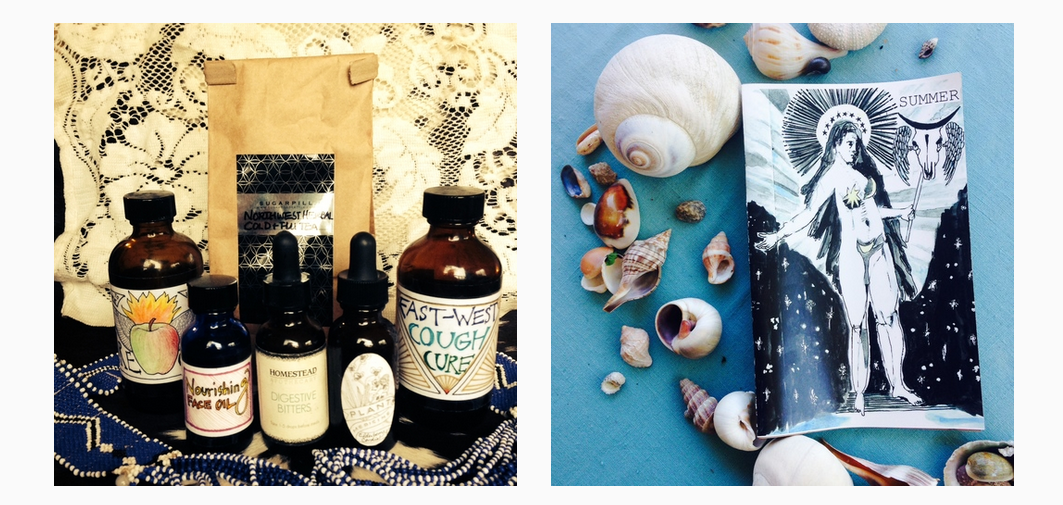
St. Pierre: Who is Nora Harrington, the energy behind the Medicine Chest?
Harrington: I’m also a gardener for an amazing gardening company called Red Twig Fine Gardening, and for a huge vegetable garden for a local island family. I’m so grateful to be spending so much time in the dirt! Realistically, running a small business, a little home and a gardening job, takes most of my time, but when I’m free, you can also find me practicing with my band Boobface, planning Lady Church, doing Tarot Spreads for lost souls and making meals with my friends. Right now I’m drinking yarrow, elderflower and ginger tea because I’m warding off a cold.
The deadline for signing up for the winter share is November 23rd! It arrives December 14th, so it will be a great holiday thing if people are thinking ahead. Last year, we had a lot of people send the subscription as a gift to their friends and family members. (One lady seriously bought 8 of them.)
The Island’s Winery Alliance to Host Labor Day Tours
August 31st, 2015
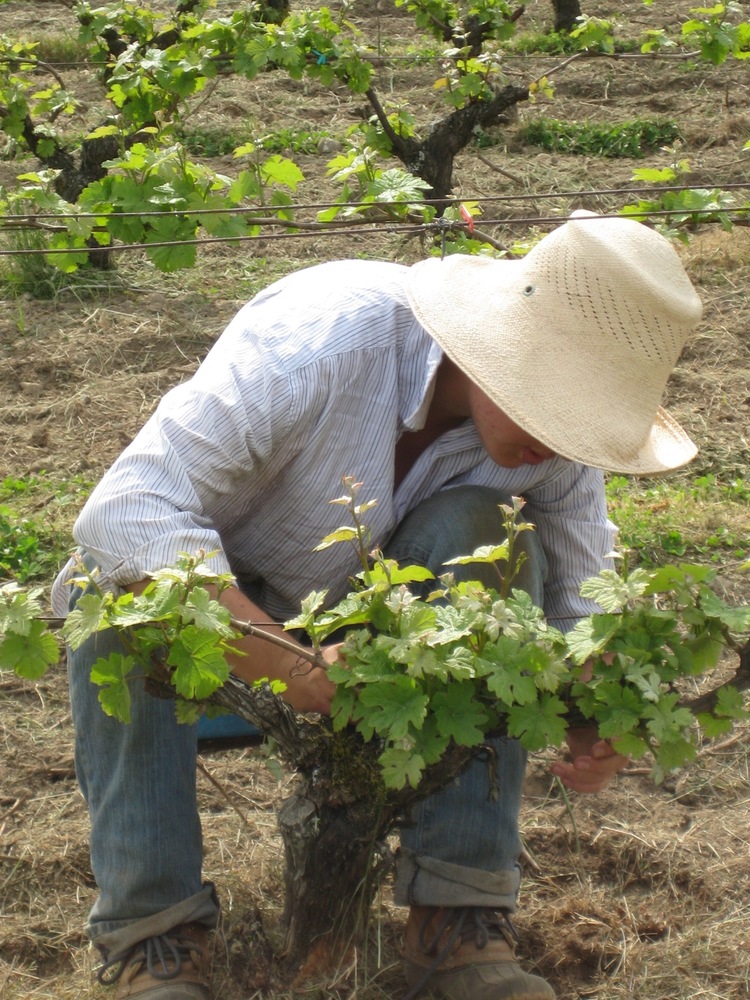
Contributed by Christine St.Pierre
This Labor Day, consider avoiding the wildfires and staying home to experience the Winery Alliance of Bainbridge Island’s Winery Tour Weekend, September 5–7, from noon to five o’clock PM. Seven wineries and one tasting room present wine procured from grapes grown within the island’s maritime climate as well as the east side of the Cascade mountains. These small and quaint wineries are earning big awards, and the vintners and viticulturists will be present during the tastings to welcome you and discuss all things vino. Take a loved one or two along for the ride, although avoid large groups as these tasting rooms are island-sized. After the clock strikes five, regroup with your friends and neighbors at one of the island’s restaurants to pour over your experiences from the day!
The Winery Alliance of Bainbridge Island (WABI), which began in 2003 at the hands of winemaking fanatics, consists of seven independent micro-wineries living right on our patch of rock. These wineries are run by their winemakers—individuals who are gifted with the ability and driven by the passion to create award-winning, vibrant handcrafted wine. Without relying on heavy machinery and thousand-barrel batches, these wineries operate through simply designed artisan systems, as well as uncomplicated, community-driven supply sources—like uber-local grapes—and neighborly distribution.
WABI consists of the following seven wineries that will be participating in the Winery Tour Weekend over Labor Day, as well as the Island Vintners tasting room:
Amelia Wynn Winery: This winery, founded in 2008, features Bordeaux, Rhone, and Northern Italian wines from grapes sourced from Eastern Washington’s aged vineyards.
Bainbridge Vineyards: With land stewardship dating back to 1928, this vineyard’s maritime bioregion—similar to that of France and Germany—works wonders for the seven acres of grape varietals grown on site at the Day Road Farm.
Eagle Harbor Winery: A commitment to honoring and furthering winemaking in Washington State has this winery producing new-age wine influenced by old world styles.
Eleven Winery: This off the cusp, sustainable (yes, green!) winery not only produces a variety of fantastic wine, but is run by wonderfully loving people who great things, like donate all after-tax profits to charity as well as sit-down food pairings with the winemaker.
Fletcher Bay Winery: Located in the happenin’ Coppertop Business Park, this winery features French Bordeaux-style wine that incorporates Italian Sangiovese and Spanish Tempranillo grapes.
Perennial Vintners: In 1997, Perennial Vintner’s (PV) winemaker began experimenting with winemaking, but it didn’t take him long to realize that most of winemaking truly happens in the vineyard, and so began the 2005 conception of (PV), producing estate-grown dry white wine from the underappreciated Melon de Bourgogne grape.
Rolling Bay Winery: After many years of playing and exploring within winemaking, a group of friends and wine enthusiasts settled in rocky Rolling Bay nearly a decade ago to handcraft fantastic wine as well as a stunningly beautiful tasting room, both of which have been considered one of the “Top 22 Tasting Rooms in Washington” by the Seattle Met.
Help Starvation Alley Farms Grow! We are!
May 22nd, 2015
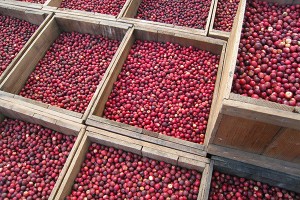
Campaign Ends May 28th!
Starvation Alley cranberry farm & juice company is raising funds for a high-volume juice press and bottling line that will help scale its juice production to 6X the current capacity. Over the past three years, Starvation Alley has become the go to source for Organic cranberries in the Northwest. As Washington State’s one-and-only certified organic cranberry farm, Starvation Alley is not only growing sustainable, local fruit, but is making it possible for other Northwest farmers to join them. They buy fruit from two neighboring farms (that are half way through the rigorous 3-year process of converting to organic) to produce a 100% pure unsweetened cranberry juice that is unlike anything else you can find on the market. Recently, Starvation Alley repaid it’s first Community Sourced Capital loan of $12,000 for a hydraulic juice press. This loan helped Starvation Alley grow to add 2 new farmers as suppliers and an additional 5 jobs local to the PNW. With the added production capacity possible from this next stage of funding the farm will be able to continue to increase its positive impact in the farming community.
Starvation Alley’s production kitchen is located on the Long Beach Peninsula in Southwest, WA. and produces about 8,000 gallons of cranberry juice a year. “Starvation Alley” is a historic road on the Peninsula that was home to hard-working oyster and cranberry laborers. They kept the name as an ode to those that came before them. We hope you’ll consider participating Find the campaign page through Community Sourced Capital here.
Starvation Alley’s mission is to support local farmer livelihood. They do this by paying great prices and aiding in the tough transition from conventional to organic growing. This loan will help them reach their next business milestone of adding an additional local farmer and creating a killer retail product that’s available to Northwest consumers.
Harbour Pub serves Starvation Alley cranberry juice exclusively and adds whole berries to its relishes and salad specials. Help us to help them!
Four Course Autumn Harvest Dinner
October 31st, 2014
BIMM Part 6 – The Growing Trend
June 30th, 2014
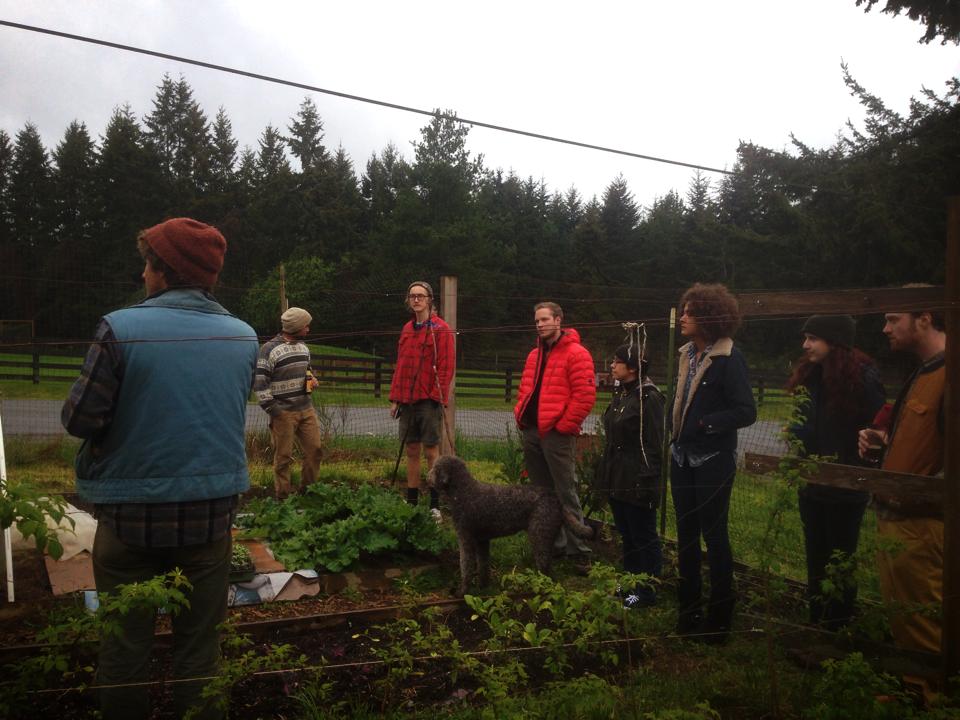
In an era shadowed by threats of environmental catastrophe, economic crisis, and social collapse, we are witnessing a mental shift in the next generation to whom the torch will be passed. By and large, the Millennials, born between 1980 and the new millennium, have been raised in a heavily consumer-centric society that has disassociated with the notion of living simply and sustainably off the land. As society wades deeper into these treacherous seas, communities have taken precautionary steps to keep themselves afloat.
Millennials are rising to the challenge by transitioning into a way of living that reclaims traditions long ago abandoned at the risk of being lost forever, traditions like homesteading, permaculture, fiber and textile production, natural medicine, and sustainable agriculture. As the price of produce and meat increases, so does the shift toward community gardening, urban farming, and agricultural education. Call it nostalgia for a romantically rustic way of life or call it necessity; either way, the growing trend in our generation, and in general, is growing organic food.
On this island, there is no shortage of small-scale farms with a focus on organic food that is grown in healthy rotation with the seasons. These farms, which foster deep community roots and innovative approaches to energy efficiency, such as natural irrigation and solar power, are staffed by pockets of Millennials with a passion for connecting to the earth and growing organic food that nourishes their bodies and the environment.
Nearly all farms on Bainbridge Island are supported by a crew of Millennials driven either by devotion or curiosity, and from what I’ve experienced, they’re really wonderful people—they’re my friends. With lives that can be mapped across the globe, these young farmers make up a colorful portion of this community, contributing music, art, and, well, food, that keep Bainbridge Island moving forward. With long, exhausting days in the sun and an intense summer push, they’re hard to find out on the town, but rather at intimate potlucks and picking sessions around a bonfire surrounded by fields of slow growing produce.
You’ve seen them bouncing between mud-caked work trucks and local restaurants with bins of fresh produce; you’ve smiled at them at the farmer’s market as they explain how to perfectly massage your kale for dinner tonight. They’re rugged and tan, with soil stained fingertips and disheveled hair hidden beneath a wool cap. They travel across the country with all of their belongings packed into their hatchback making stops at farms along the way. They conduct educulture programs aimed at introducing young children to the art of farming organic food and give property tours that showcase their happy plant and livestock production. They’re WWOOFers, interns, grantees, dreamers, spearheads; they are the future of a newfound relationship with food that just might save us all.
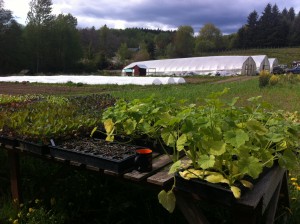
Stitch ‘n Bitch
March 28th, 2014
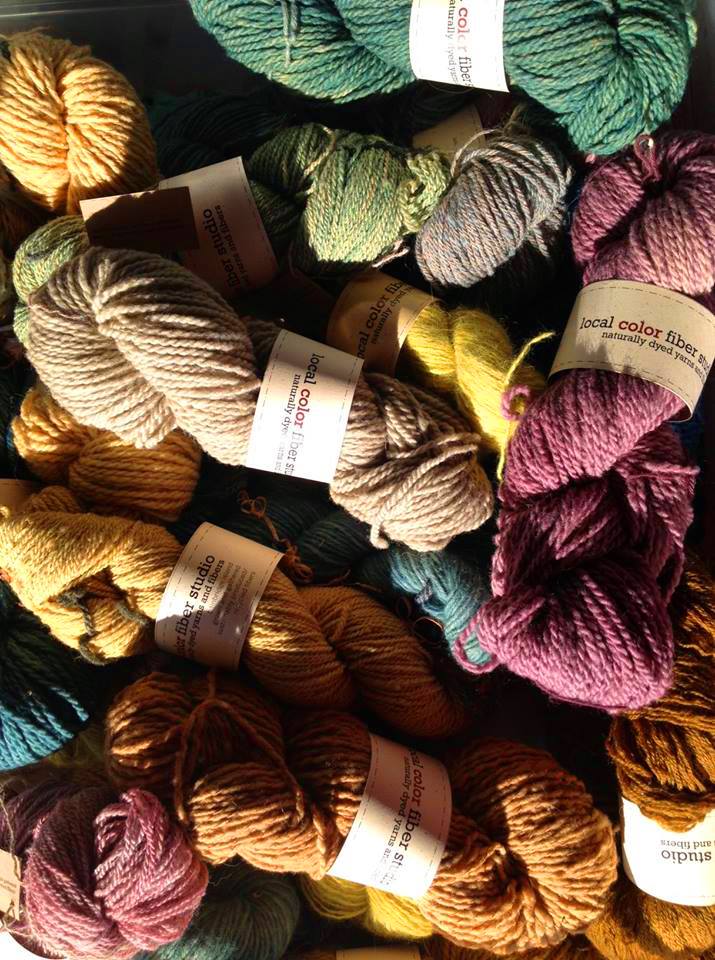
Every Tuesday at Bainbridge Island Brewing Company, a group of wool-clad islanders sit in a circle around heaping piles of yarn, casting and binding and looping and dropping stitches in the slow, methodical creation of their latest sweater, cowl, fingerless gloves, or beanie. The gathering, called Stitch ‘n Bitch, consists of local folks interested in textiles, knitting, drinking craft ales, or genuine conversation.
Knitting has always seemed out of reach—an unachievable skill. I tried to learn a few times, but constantly dropped a stitch in each row, making tiny little triangles that were ultimately useless. I gave up, and as the years have passed, so have the windows of opportunity to learn this social folk tradition. Ironically, I always imagined the years passing while I knit socks on the front porch, swaying in a rocking chair and watchin’ the crops grow. The time had come!
When I approached the group for the first time, I was met with warm smiles and chairs slid over to make room for me. They continued on with their conversations while their buzzing fingers robotically repeated pattern after pattern, seemingly detached from the rest of their bodies. Impressed and intimidated by their dexterous mobility, I introduced myself as an aspiring knitter with an unfortunate “ya can’t teach an old dog new tricks” disposition. The group deflected my lack of confidence, having all been there at one point, and offered words of encouragement, assuring that I would be able to knit and create in no time. Then, one stitcher pulled a beautiful ball of steel blue merino wool from her bag and held it out to me.
“Here, learn with this!” she suggested.
“For me? You’re just giving this to me?” I asked, shocked.
“Do you like it?”
“Yes, it’s amazing!”
“Then make something beautiful with it!” She smiled, and everyone continued on chatting.
No big deal. Just a perfect ball of merino wool yarn. Gifted to a stranger, no less. What a community we’ve got here on the island! The next day I bought my first pair of knitting needles–sized nine per suggestion of the group–and began courting a lifelong relationship with knitting. Since that first Stitch ‘n Bitch, I haven’t come far with the craft, but I have built relationships within the group. Each stitcher has a loving, warm character. Often they’ll cook each other food and bring a sharing dish to the gatherings.
The gatherings are organized by Tatyana Vashchenko, co-founder of Local Color Fiber Studio, a fiber dying duo consisting of Tatyana and Emily Tzeng, who cultivate and forage various plants to use for dying natural yarns. These two sell their organically pigmented yarns at farmers markets and online at localcolorfiberstudio.com. Come meet Tatyana, Emily, and the rest of the Stitch ‘n Bitch craftspeople on Tuesday nights between 7 and 9 PM at Bainbridge Island Brewing Company. Support your community, support local art, and, while you’re at it, support local beer!
